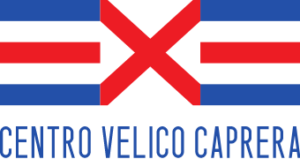Scuola di mare e di vela dal 1967. Corsi su Derive e Cabinati con un metodo di insegnamento unico, una flotta in continuo aggiornamento e condizioni di vento tra le migliori nel Mediterraneo. La Fondazione CVC – Centro Velico Caprera ETS persegue obiettivi legati alla salvaguarda dell’ambiente marino e al benessere della persona attraverso il contatto con il mare. La sua attività è regolata da uno Statuto e rendicontata in un Bilancio Sociale.
Iscriviti alla nostra newsletter per rimanere sempre informato su eventi, iniziative ed offerte esclusive.
Entro un mese (30 giorni) prima dell’inizio del corso è necessario che:
Allo sbarco dal traghetto gli allievi di ogni corso vengono radunati e viene loro assegnato il posto nei dormitori. Prendi possesso del tuo posto letto, vestiti in modo adeguato per la prova di nuoto e di scuffia (corsi di iniziazione deriva) o per l’attività sulle barche. Verrete quindi riuniti in aula per ricevere istruzioni dal Capo degli istruttori (Capo Turno) e dal personale della base.
Nell’insediamento dell’Iniziazione di Punta Coda vi sono delle cassette di sicurezza individuali. Ti verrà consegnata la chiave dietro cauzione di 50 Euro. Negli altri insediamenti ci sono delle casseforti collettive. La Scuola non risponde per il furto di oggetti lasciati incustoditi. Evitare di portare oggetti preziosi o eccessive somme di denaro.
Gli orari
La vita a Caprera è regolata dai seguenti orari :
06.30 sveglia
07.00 prima colazione
07.45 lezione
09.00 imbarco
12.30 sbarco
13.00 pranzo
13.45 lezione
14.30 imbarco
18.30 sbarco
20.00 cena
21.00 commenti sulla giornata
22.30 silenzio
Particolare attenzione viene raccomandata al riposo nelle ore notturne: l’attività sportiva molto intensa infatti non consente di perdere ore di riposo.
Oltre ai telefoni personali, per mettersi in contatto con gli allievi, da maggio a ottobre, si può telefonare alla Segreteria di La Maddalena (0789/738529).
Non è consentito usare i telefoni cellulari in barca o durante le lezioni a terra.
Il loro uso è consentito solo nei momenti liberi.
Tutti gli allievi partecipano alle attività comuni (distribuzione dei pasti, pulizia della mensa, dei dormitori e dei servizi, aiuto in veleria e sui gozzi). Ciò aiuterà ad acquisire la mentalità della vita in comune su una barca dove tutto l’equipaggio contribuisce alle attività di bordo.
Per un giorno, nei corsi settimanali, o due giorni, nei corsi quindicinali, ogni allievo viene impiegato nella “comandata”.
Coca cola, birra, vino e altre bevande possono essere acquistate tramite il personale dello spaccio.
L’acqua in tavola ed in barca è fornita gratuitamente, Per uso personale è sempre possibile ricaricare le proprie borracce dagli appositi erogatori presenti nelle basi.
Si raccomanda di portare il tesserino personale dell’ASL. A Caprera esiste un’infermeria.
Nel caso sia necessario il trasferimento in un ospedale a La Maddalena o ad Olbia l’allievo dovrà pagare il mezzo per il rientro alla Base.
